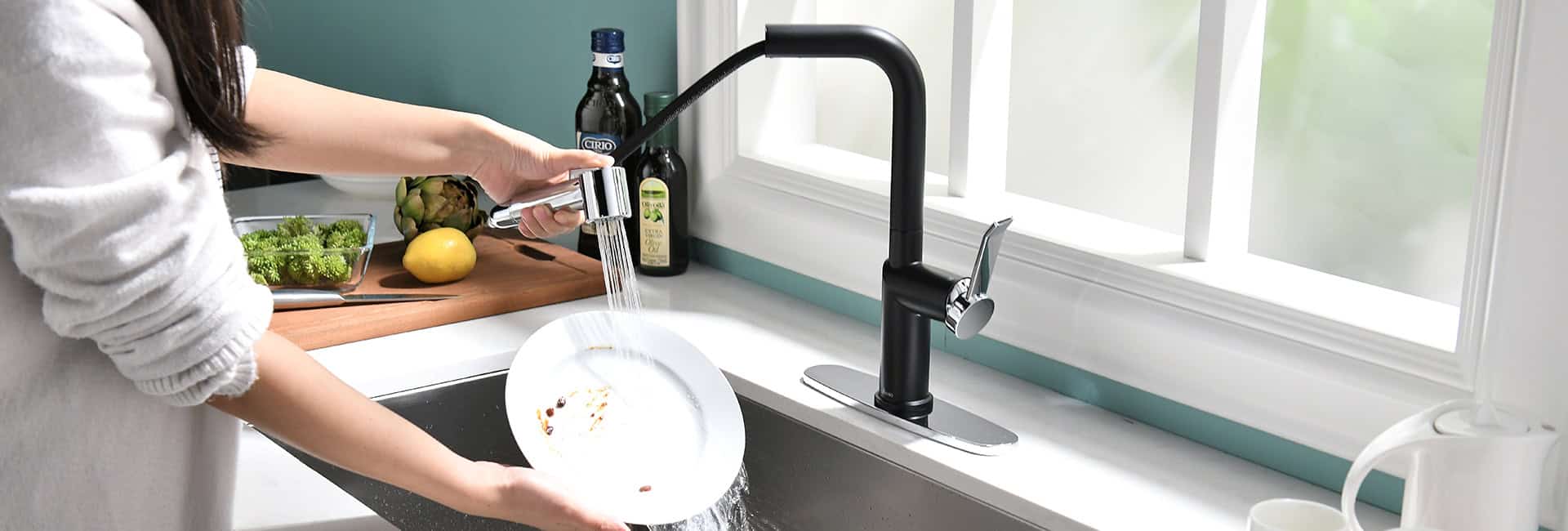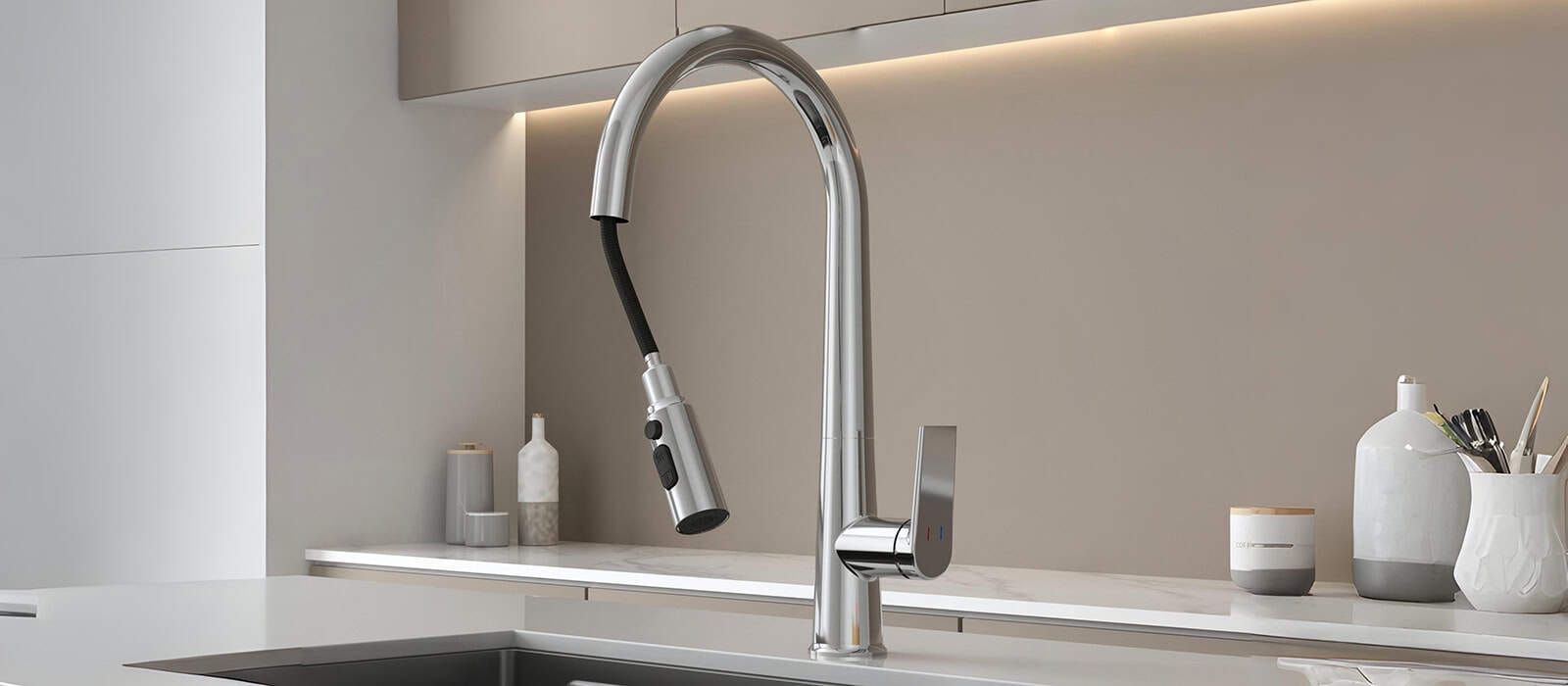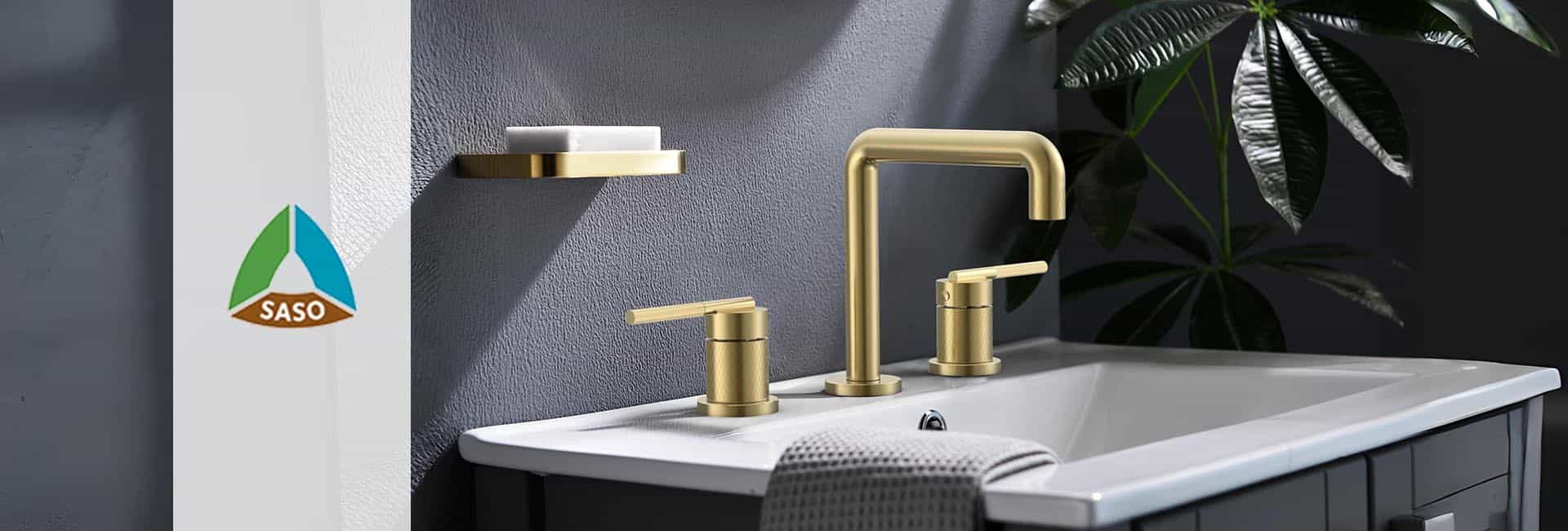Kitchen faucets are essential for functionality and style in any home. They deliver water for cooking, cleaning, and drinking while enhancing your kitchen’s aesthetic. With numerous options available, choosing the right faucet can feel overwhelming. This guide covers all major kitchen faucet types, their features, how they work, and key considerations to help you make an informed decision. Whether you’re upgrading your sink or designing a new kitchen, this guide equips you with everything you need to succeed.
Why Your Kitchen Faucet Matters
A well-chosen faucet improves your kitchen by:
- Enhancing efficiency: Features like sprayers or touchless controls streamline tasks.
- Elevating design: A stylish faucet complements your kitchen’s look.
- Conserving resources: Efficient models reduce water waste without sacrificing performance.
A poor choice can lead to leaks, mismatched aesthetics, or limited functionality. Let’s dive into the types, mechanics, and selection process to ensure you pick the perfect faucet.
Types of Kitchen Faucets: Your Options Explained
Faucets come in a variety of styles, each designed for specific needs and preferences. Below is a comprehensive list of kitchen faucet types, including their functionality, advantages, and ideal use cases.
Single-Handle Kitchen Faucets
- How they work: A single lever controls both water flow and temperature.
- Pros: Easy to use, modern design, simple to clean.
- Cons: Less precise temperature adjustments.
- Best for: Busy kitchens needing quick, one-handed operation.

Double-Handle Kitchen Faucets
- How they work: Two separate handles adjust hot and cold water.
- Pros: Precise temperature control, classic look.
- Cons: Requires both hands, more components to maintain.
- Best for: Traditional kitchens or users who prioritize accuracy.

Touchless Kitchen Faucets
- How they work: Motion sensors activate water flow.
- Pros: Hygienic, water-saving, easy to operate.
- Cons: Higher cost, may need batteries or power.
- Best for: Hygiene-conscious homes or accessibility needs.
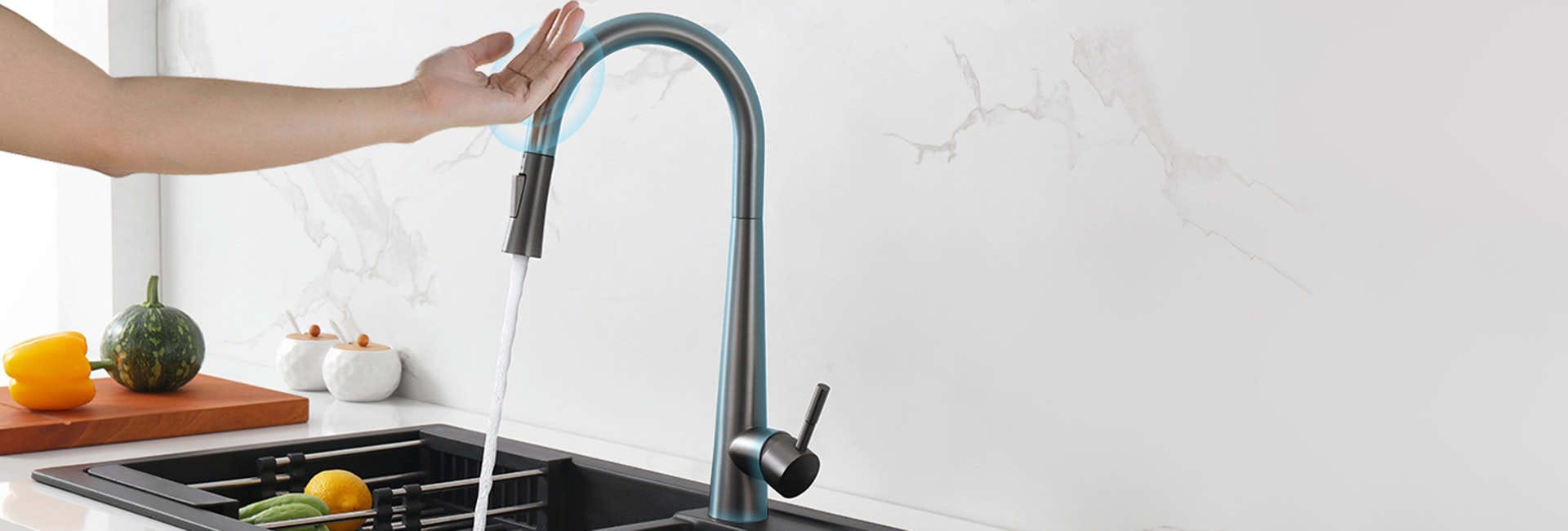
Smart Kitchen Faucets
- How they work: Voice or app commands control flow and temperature.
- Pros: Advanced customization, hands-free convenience.
- Cons: Expensive, requires tech setup.
- Best for: Tech enthusiasts and modern kitchens.

Wall-Mounted Kitchen Faucets
- How they work: Mounted on the wall above the sink.
- Pros: Saves counter space, bold aesthetic.
- Cons: Complex plumbing installation.
- Best for: Minimalist or custom-designed kitchens.
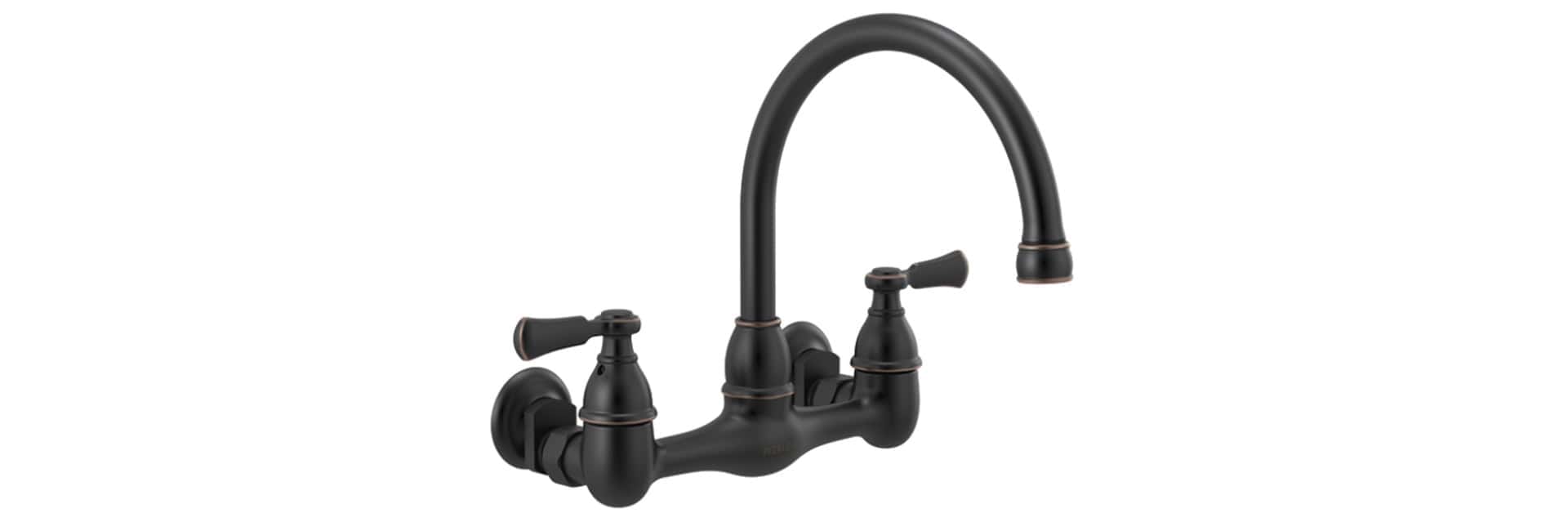
(via.Peerless»)
Separate Spray Kitchen Faucets
- How they work: A side sprayer, separate from the main spout, delivers water.
- Pros: Flexible for cleaning, retro charm.
- Cons: Takes extra sink space, less modern.
- Best for: Traditional kitchens or budget upgrades.
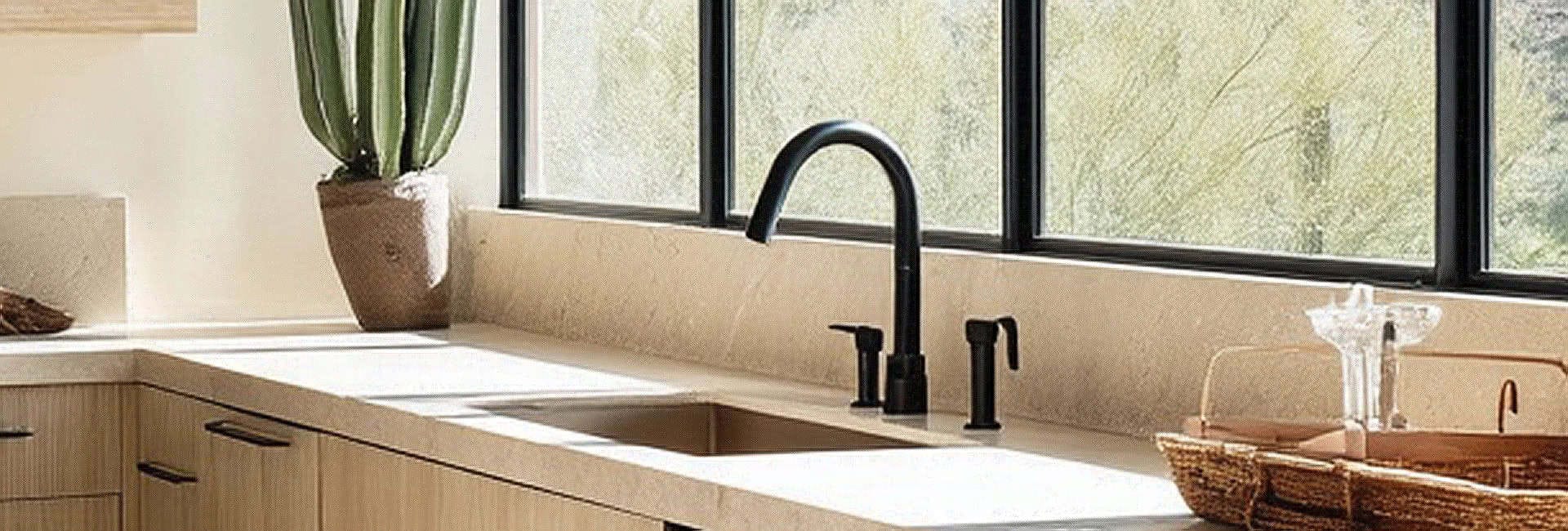
Pre-Rinse Kitchen Faucets
- How they work: High-pressure sprayer with a tall, flexible spout, like commercial kitchens.
- Pros: Powerful cleaning, great for heavy messes.
- Cons: Bulky, higher cost.
- Best for: Home chefs mimicking professional setups.

(via.Pioneerind»)
Bridge Kitchen Faucets
- How they work: Two handles connect via a horizontal bridge to a central spout.
- Pros: Elegant, vintage style, balanced flow.
- Cons: Needs multiple sink holes, less versatile.
- Best for: Farmhouse or classic kitchens.

(via.NFM»)
Straight Spout Kitchen Faucets
- How they work: Fixed spout with a simple, straight design.
- Pros: Sleek, low-maintenance, space-saving.
- Cons: Limited reach and flexibility.
- Best for: Minimalist kitchens or small sinks.
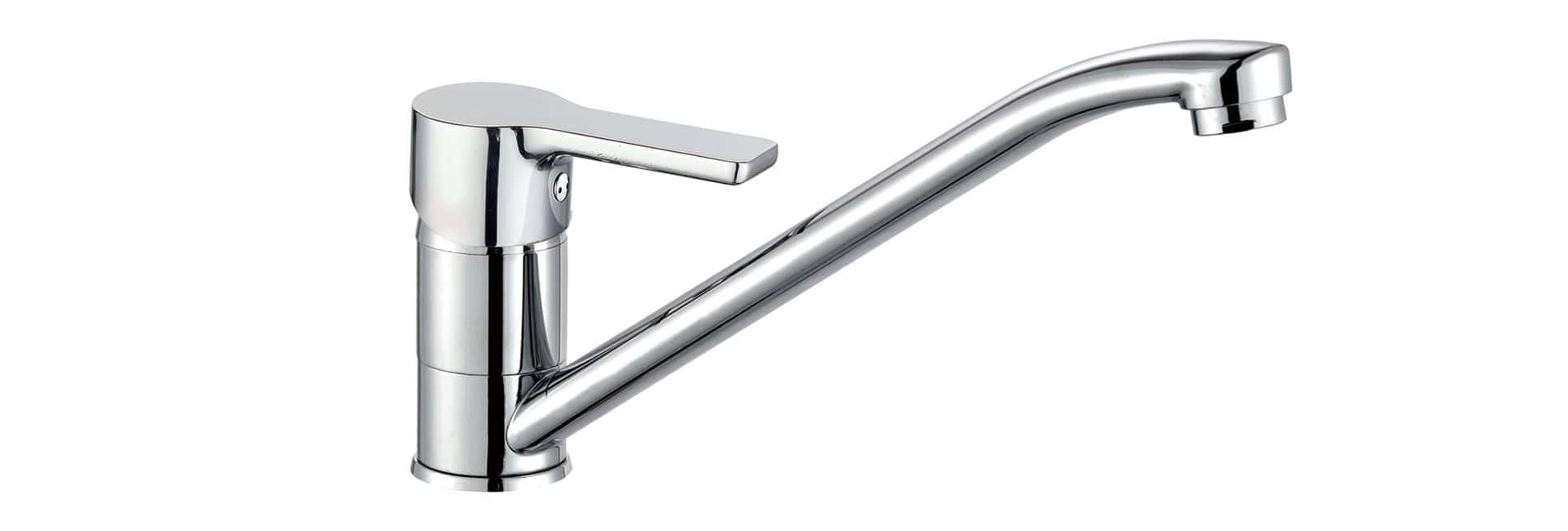
Swivel Spout Kitchen Faucets
- How they work: The spout rotates for wider coverage.
- Pros: Flexible positioning, easy to adjust.
- Cons: May lack advanced features like sprayers.
- Best for: Double-basin sinks needing versatile reach.
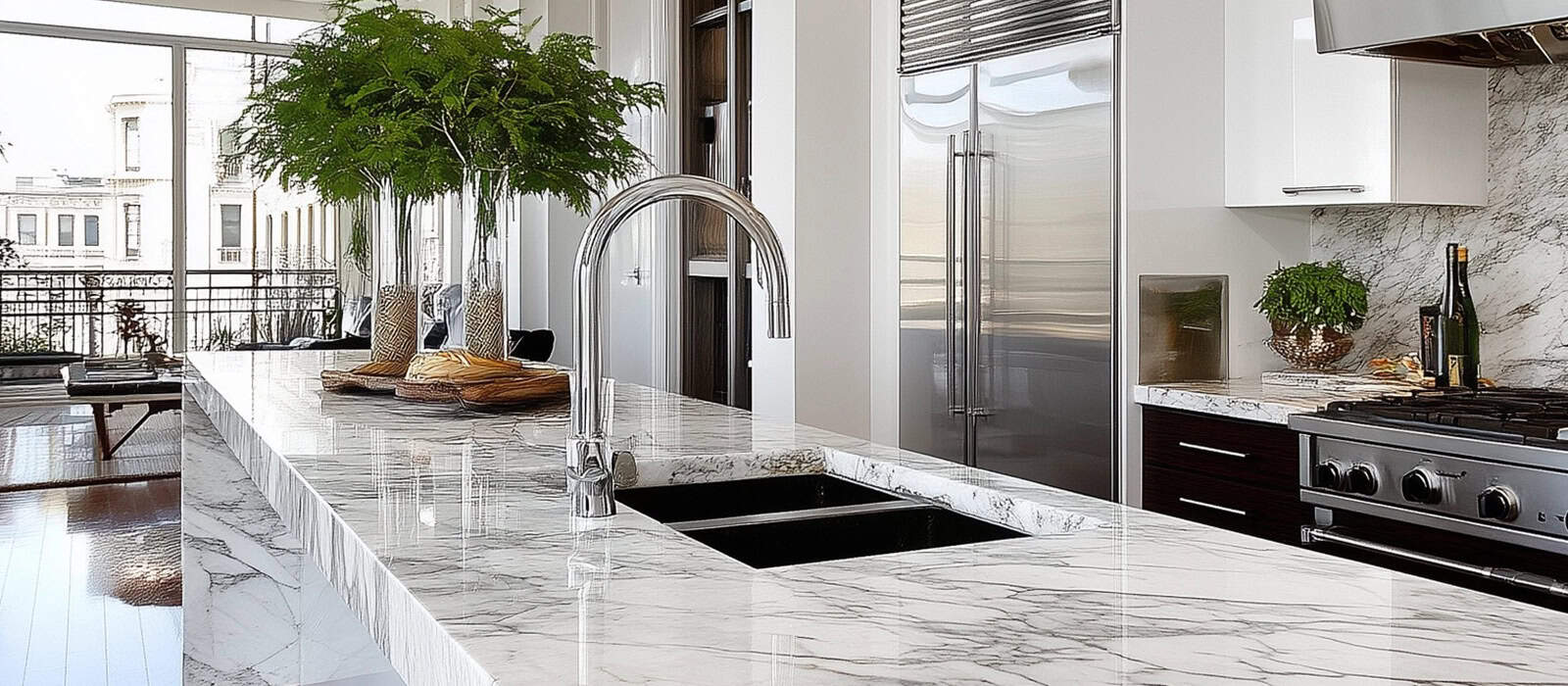
Kitchen Filter Taps
- How they work: Integrated with a filtration system, these taps provide purified drinking water directly from a separate spout or built-in filter.
- Pros: Delivers clean, great-tasting water; reduces need for bottled water; cost-effective over time.
- Cons: Requires filter replacements and additional plumbing.
- Best for: Households prioritizing health, taste, and environmental sustainability.
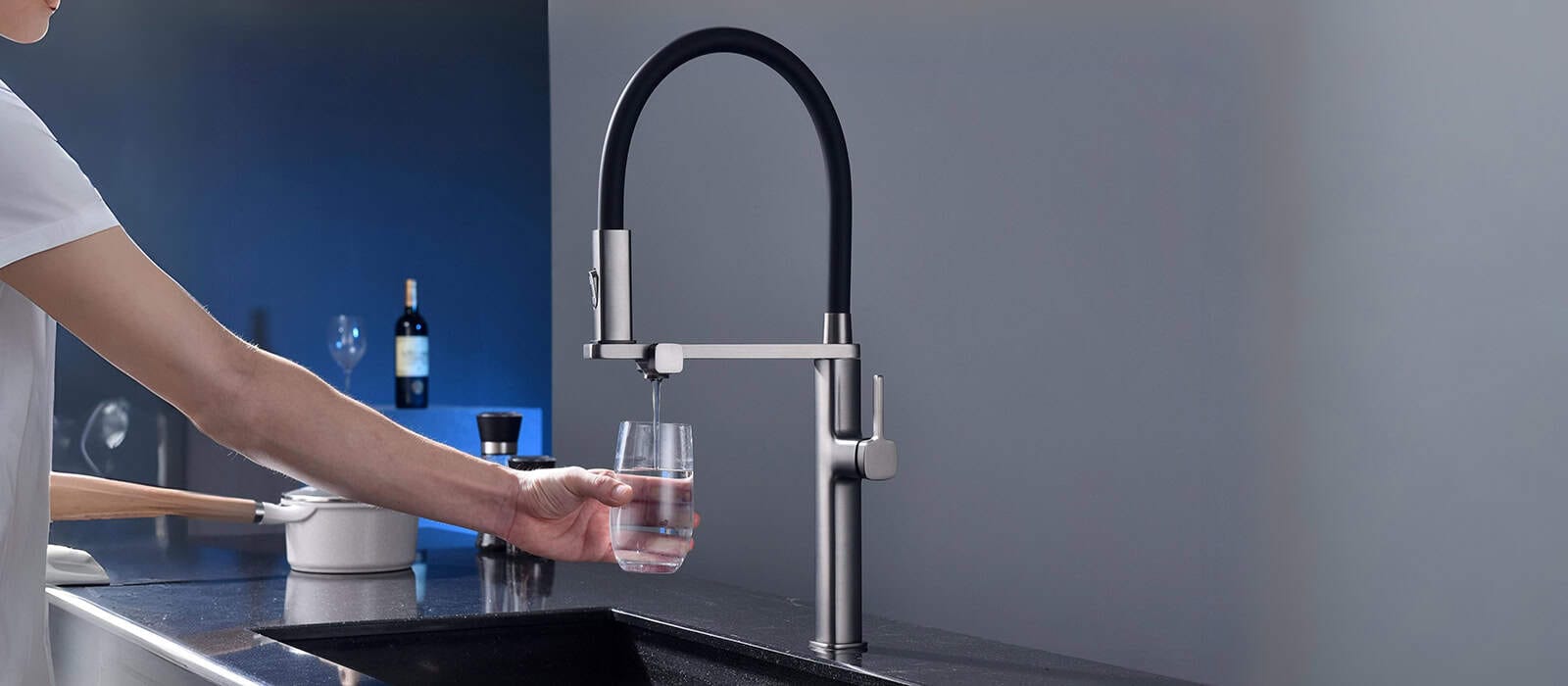
How Kitchen Faucets Work: Understanding the Mechanics
To choose the right faucet, it helps to know how it operates. A kitchen faucet’s core components include the spout, handles or sensors, and valve system, which work together to deliver water efficiently.
Key Components
- Spout: Directs water flow; can be fixed, swivel, pull-out, or pull-down.
- Handle(s) or Sensor: Controls water flow and temperature (single/double handles or motion sensors).
- Valve: Regulates water flow and prevents leaks.
- Aerator: Shapes water flow and reduces splashing.
- Body: Houses the internal components, connecting to water lines.
Valve Types
The valve is the heart of the faucet, controlling water flow and durability:
- Ceramic Disc: Two ceramic discs slide to control water. Durable, leak-resistant, and low-maintenance.
- Cartridge: A cartridge moves to adjust flow and temperature. Reliable but may need replacement over time.
- Ball: A rotating ball in single-handle faucets adjusts flow. Effective but prone to wear.
- Compression: Older valves use washers to stop water. Affordable but susceptible to leaks.
How Water Flows
- Water enters through hot and cold supply lines under the sink.
- The valve (controlled by handles or sensors) mixes hot and cold water to your desired temperature.
- The mixed water travels through the faucet body to the spout.
- The aerator shapes the flow, ensuring a steady stream or spray.
Special Features
- Pull-Out/Pull-Down: A hose inside the spout extends for flexible reach.
- Touchless/Smart: Sensors or voice commands trigger an electronic valve to start/stop water.
- Pre-Rinse: High-pressure valves deliver powerful sprays for tough cleaning.
How to Choose the Right Faucet
Follow these steps to pick a faucet that fits your kitchen:
Assess Your Sink
- Hole Count: Check if your sink has 1-4 holes to match the faucet type.
- Size and Depth: Pair deep sinks with high-arc or pull-down faucets; small sinks with compact models.
Prioritize Features
- Sprayers: Pull-out for flexibility, pull-down for power, or separate spray for classic setups.
- Controls: Choose handles, touchless, or smart controls based on ease and hygiene needs.
- Extras: Look for built-in filters, pause buttons, or soap dispensers.
Match Your Style
- Design: Opt for modern, traditional, or farmhouse aesthetics.
- Finish: Select chrome, stainless steel, matte black, or brushed nickel for durability and style.
Focus on Efficiency
- Choose WaterSense-certified» faucets to save water (e.g., 1.5-2.0 GPM flow rate).
- Look for eco-friendly features like built-in water filters.
Consider Materials
- Stainless Steel: Durable, resists corrosion.
- Brass: Long-lasting, premium feel.
- Chrome/Nickel: Easy to clean, stylish.
- Plastic: Budget-friendly but less durable.
Tip: Match materials to your sink (e.g., stainless steel faucets pair well with granite sinks).
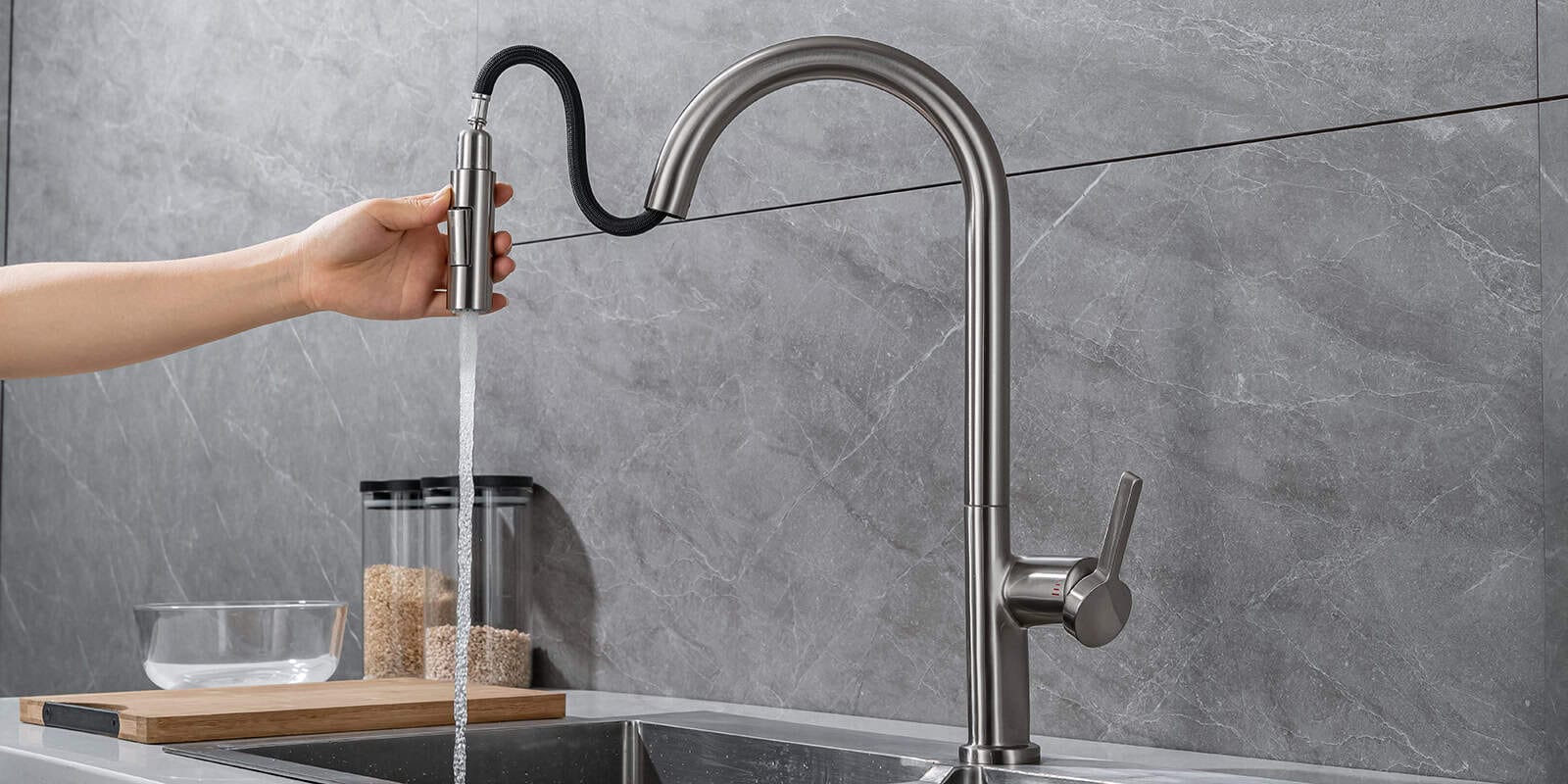
Install Your Faucet Like a Pro
You can install most faucets with basic tools. Here’s a quick guide, with a focus on pull-out faucets (adaptable to others):
Tools Needed
- Adjustable wrench
- Basin wrench
- Plumber’s tape
- Silicone sealant
- Bucket and towel
Steps for Pull-Out Faucet Installation
- Turn off water: Close valves under the sink or at the main supply.
- Remove old faucet: Disconnect water lines and unscrew mounting nuts with a basin wrench.
- Insert new faucet: Place the faucet in the sink hole, ensuring the gasket seals tightly.
- Secure it: Tighten mounting nuts under the sink with a basin wrench.
- Connect water lines: Wrap plumber’s tape on threads, then attach hot and cold lines.
- Attach the sprayer: Connect the pull-out hose to the faucet body, ensuring smooth retraction.
- Test it: Turn on water, check for leaks, and test the sprayer’s modes.
Maintain Your Faucet for Longevity
Keep your faucet in top shape with these tips:
- Clean regularly: Wipe with soap and a soft cloth to prevent buildup.
- Fix leaks: Tighten connections or replace worn O-rings or cartridges.
- Clear aerator clogs: Soak in vinegar to remove debris.
- Check hoses: Ensure pull-out/pull-down hoses retract smoothly.
Top Faucet Manufacturers Compared
Here’s a comparison of leading brands based on features, price, and user ratings:
| Brand | Strength | Rating |
Customer Feedback |
|---|---|---|---|
| Delta | Innovative features | 4.5/5 |
“Reliable, stylish, easy to install.” |
| Moen | Durability | 4.4/5 |
“Great performance, excellent customer service.” |
| Kohler | Premium design | 4.6/5 |
“Stylish and functional, but pricey.” |
| Luxuryhome | Cost-effective | 4.3/5 |
“Affordable quality, sleek look.” |
| Pfister | Premium craftsmanship | 4.2/5 |
“Great value, solid performance.” |
Explore reviews at Consumer Reports».
Current Trends in Kitchen Faucets
Stay ahead with these 2025 trends:
- Smart Technology: Voice-activated faucets like Kohler Konnect» offer precision control.
- Bold Finishes: Matte black, gold, or brushed bronze add flair.
- Eco Features: Water filters and low-flow aerators promote sustainability.
- Accessibility: Lever handles and touchless options suit all users.
Cost and Warranty Considerations
- Cost: Basic faucets start at $30; smart models can exceed $6
- Warranty: Most brands offer lifetime warranties on leaks and finishes.
Conclusion
With 14 unique kitchen faucet types, from single-handle to smart and bridge designs, selecting the right one depends on your kitchen’s needs and style. For small sinks, choose pull-out or straight spout faucets for their compact versatility. Deep sinks pair best with high-arc pull-down or pre-rinse faucets for powerful cleaning. Traditional kitchens shine with double-handle or bridge faucets, while modern spaces benefit from sleek touchless or smart models. For frequent cooks, pot fillers streamline tasks, and wall-mounted faucets suit minimalist designs. Prioritize WaterSense-certified models for efficiency and ceramic disc valves for durability.
FAQs
About Luxuryhome
Luxuryhome is not just a faucet manufacturer or wholesaler, but more like a partner who can provide you with more added value.
We are united in our determination to produce China-made bath and kitchen fixtures adhering to the highest ethical principles. You have our promise!
More post you may interested in

